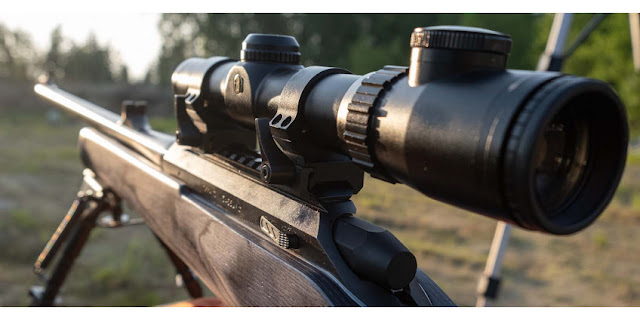How to Use a Night Vision Scope
Inexperienced users may be alarmed by the sight of a night vision scope. There are numerous approaches, and the process might be perplexing. This guide will walk you through the fundamentals of sighting in a scope using the "dot-and-dot" method.
How to Use a Night Vision Scope
A night vision scope can be used in a variety of ways. A laser bore sight is one option. This is a small laser device that has been installed in the weapon's barrel. It is then aligned with the weapon's sights. On the target, the laser will emit a little dot.
The user then adjusts the weapon's sights until the dot is in the center of the target.
Here are some additional ways to use your night vision scope:
- Confirm that your weapon is empty and pointed in a safe direction.
- Use the manufacturer's instructions to attach the night vision scope to your weapon.
- Set the scope's focus according to the directions in the user manual.
- Turn on the scope and wait a few minutes for it to warm up.
- Use the scope to look at a target at least 100 yards away.
- Adjust the elevation and windage turrets on the scope's side until the crosshairs are aligned with the target.
This method necessitates the user having prior expertise in shooting and changing weapon sights. The user fires a live bullet at a target and adjusts the weapon's sights until the round reaches the center of the target.
The third method makes use of a man-made light source, such as a flashlight or lamp.
Expert Techniques for Sighting in a Night Vision Scope
Some shooters like to use a laser sight, while others use the reticle on a night vision scope. Many approaches can be used to obtain an accurate sight picture, and experimenting is the best way to find out what works for you.
A laser sight in conjunction with a night vision scope is a popular method. Aligning the laser with the target allows you to see where the bullet will strike without having to glance through the scope. This can be useful when attempting to adjust for variations in wind or elevation.
Another method is to use the night-vision scope's reticle as a sighting aid. This entails adjusting the scope's focus until the reticle appears clear, then aligning it with the target.
What Shouldn't You Do with Night Vision?
When you obtain a new set of night vision goggles, read the instruction manual to learn how to use them properly. There are some things you should avoid doing with night vision goggles, or they will stop working. Here are some things you should avoid:
- Avoid shining the light in your eyes. The light could harm your eyes as well as your night vision goggles.
- Avoid looking at a strong light source. Your eyes and night-vision goggles will be damaged by the brightness.
- Never smoke near your night vision goggles. The smoke will damage the goggles' lenses.
- Avoid dropping or mishandling night vision goggles. This can damage the device's optics and render it useless.
How far should I sight through my thermal scope?
There is no conclusive answer to this topic because it depends on the exact thermal scope and intended usage. A reasonable starting point, though, is to sight in at 100 yards.
Summary
Night vision scope sighting is a simple procedure that requires only a few basic items. If you follow the steps in this article, you should be able to get good results and get the most out of your night vision scope.
